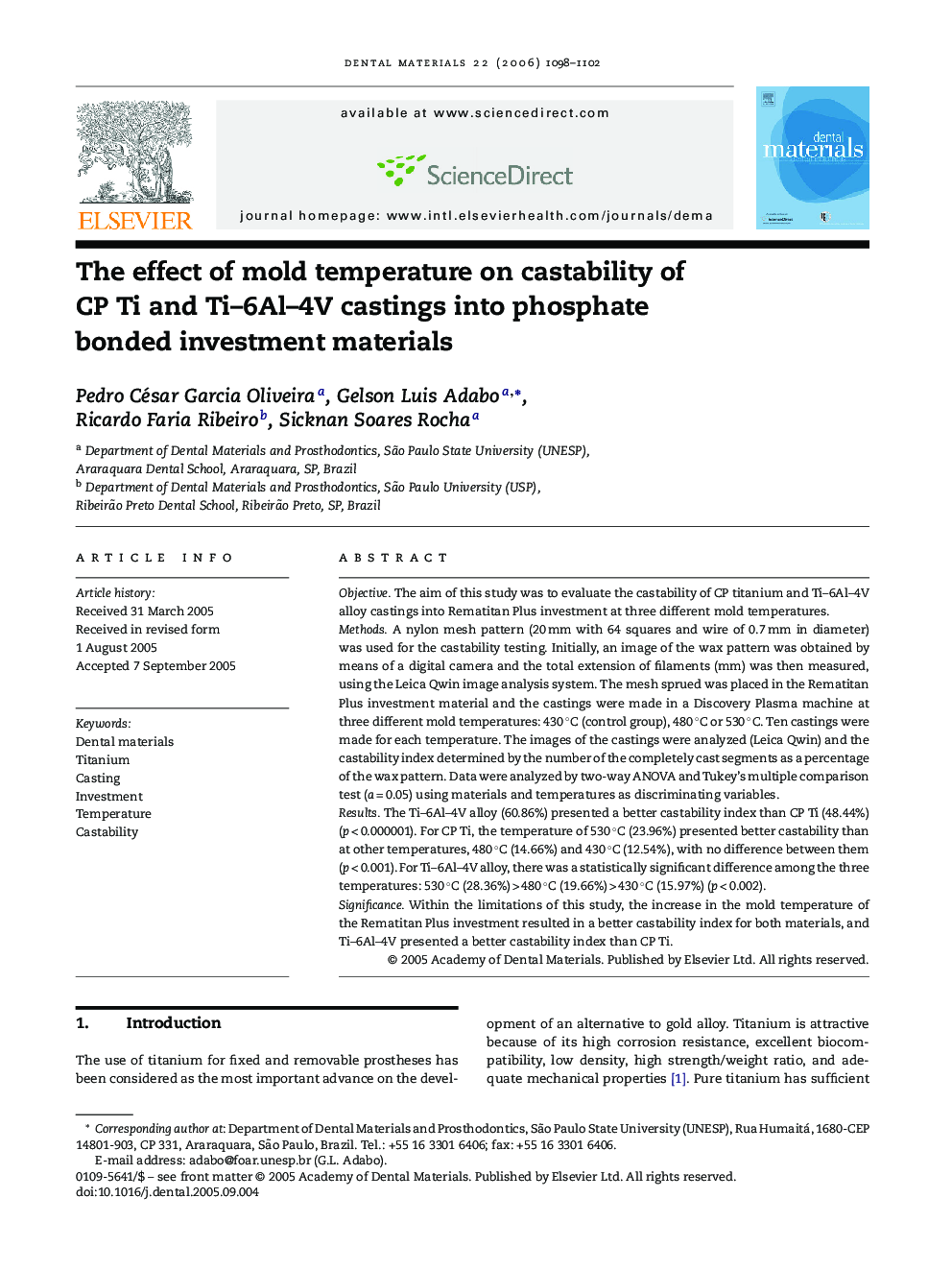| Article ID | Journal | Published Year | Pages | File Type |
|---|---|---|---|---|
| 1423433 | Dental Materials | 2006 | 5 Pages |
ObjectiveThe aim of this study was to evaluate the castability of CP titanium and Ti–6Al–4V alloy castings into Rematitan Plus investment at three different mold temperatures.MethodsA nylon mesh pattern (20 mm with 64 squares and wire of 0.7 mm in diameter) was used for the castability testing. Initially, an image of the wax pattern was obtained by means of a digital camera and the total extension of filaments (mm) was then measured, using the Leica Qwin image analysis system. The mesh sprued was placed in the Rematitan Plus investment material and the castings were made in a Discovery Plasma machine at three different mold temperatures: 430 °C (control group), 480 °C or 530 °C. Ten castings were made for each temperature. The images of the castings were analyzed (Leica Qwin) and the castability index determined by the number of the completely cast segments as a percentage of the wax pattern. Data were analyzed by two-way ANOVA and Tukey's multiple comparison test (a = 0.05) using materials and temperatures as discriminating variables.ResultsThe Ti–6Al–4V alloy (60.86%) presented a better castability index than CP Ti (48.44%) (p < 0.000001). For CP Ti, the temperature of 530 °C (23.96%) presented better castability than at other temperatures, 480 °C (14.66%) and 430 °C (12.54%), with no difference between them (p < 0.001). For Ti–6Al–4V alloy, there was a statistically significant difference among the three temperatures: 530 °C (28.36%) > 480 °C (19.66%) > 430 °C (15.97%) (p < 0.002).SignificanceWithin the limitations of this study, the increase in the mold temperature of the Rematitan Plus investment resulted in a better castability index for both materials, and Ti–6Al–4V presented a better castability index than CP Ti.
